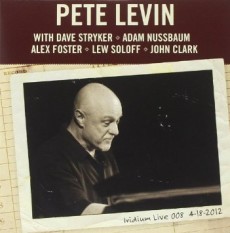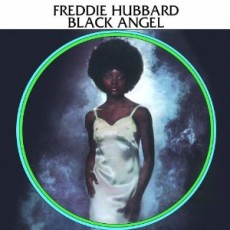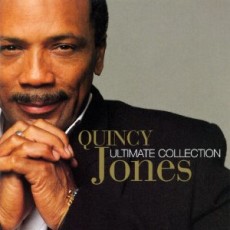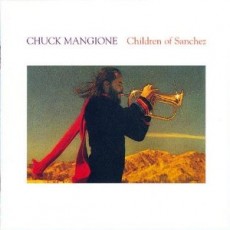
Daily Dose Of Jazz…
Pete Levin was born December 20, 1942 in Brookline, Massachusetts and his first instrument as a teenager was a French horn. He studied at Boston University and received a master’s degree from Juilliard School of Music in New York City. In the early 1970s he joined the Gil Evans Orchestra as a French horn player. At the time, he was experimenting with synthesizers. Over time Gil Evans incorporated his synthesizer sound into the compositions and his role changed to a full-time keyboardist for the next fifteen years. Leaving the Gil Evans Orchestra he followed with an eight-year association with Jimmy Guiffre.
Levin plays the Hammond organ, clavinet and moog synthesizer. He has produced several albums as a bandleader and has released a collaborative album with his brother, bassist Tony Levin, as a tribute to and styled after the works of Oscar Pettiford and Julius Watkins. He has performed for film and television scores including Missing In Action, Lean On Me, Silver Bullet, Red Scorpion,, The Color of Money, Maniac, Spin City, America’s Most Wanted and Star Trek.
He has worked with Carla Bley, Brubeck Brpthers, Hiram Bullock, Jimmy Cobb, Billy Cobham, Willie Colon, Miles Davis, Rachelle Ferrell, Bryan Ferry, Gregory Hines, Thad Jones/Mel Lewis Band, Annie Lennox, Chuck Mangione, Charles Mingus, Gerry Mullligan, Salt-n-Pepa, David Sanborn, John Scofield, Wayne Shorter, Paul Simon, Lew Soloff, Vanessa Williams and Lenny White among others.
He was awarded the Army Commendation Medal for writing the official military band arrangement of the U.S. Infantry song. Jazz keyboardist and horn player Pete Levin continues to perform, record and tour.
More Posts: french horn

Daily Dose Of Jazz…
Frederick Dewayne Hubbard was born on April 7, 1938 in Indianapolis, Indiana and started playing the mellophone and trumpet in his school band at Arsenal Technical High School. Upon the recommendation of one-time Stan Kenton sideman, trumpeter Lee Katzman, he began studies at the Arthur Jordan Conservatory of music. During his teens he played with Wes and Monk Montgomery, bassist Larry Ridley and James Spaulding.
1958 saw a 20-year old Hubbard in New York working with the likes of Philly Joe Jones, Sonny Rollins, Slide Hampton, Eric Dolphy, J. J. Johnson and Quincy Jones. Three years later in ’61 he recorded his debut as a leader, Open Sesame with Tina Brooks, McCoy Tyner, Sam Jones and Clifford Jarvis. That same year he replaced Lee Morgan in Art Blakey’s Jazz Messengers and for the next five years played and recorded on a succession of albums. Leaving Blakey in 1966 he formed the first of several small groups with among others Kenny Baron and Louis Hayes.
Throughout his hard bop and post bop career he recorded profusely for Blue Note, Atlantic, CTI, Columbia and a host of subsidiaries and smaller labels playing with the likes of Ornette Coleman, John Coltrane, Wayne Shorter, Eric Dolphy, Don Cherry, Herbie Hancock, Oliver Nelson, Stanley Turrentine, George Benson, Richard Wyands, Eric Gale, Ron Carter, Jack DeJonette, Dexter Gordon, Curtis Fuller and the list goes on.
Freddie Hubbard, NEA Jazz Master, had an unmistakable and influential tone that greatly contributed to new perspectives for modern jazz and bebop. He passed away from a heart attack on December 29, 2008.
More Posts: cornet,flugelhorn,french horn,mellophone,trumpet

Daily Dose Of Jazz…
Quincy Delight Jones, Jr. was born on March 14, 1933 in Chicago, Illinois. When he was ten, his family moved to Bremerton, Washington, a suburb of Seattle. He first fell in love with music when he was in elementary school, and tried nearly all the instruments in his school band before settling on the trumpet. While barely in his teens attending Garfield High, Quincy befriended then-local singer-pianist Ray Charles and the two youths formed a combo, eventually landing small club and wedding gigs.
At 18, the young trumpeter won a scholarship to Berklee College of Music in Boston, Massachusetts but dropped out abruptly when he received an offer to go on the road with bandleader Lionel Hampton. The stint with Hampton led to work as a freelance arranger and settling in New York, throughout the 1950s he wrote charts for Tommy Dorsey, Gene Krupa, Sarah Vaughan, Count Basie, Duke Ellington, Dinah Washington, Cannonball Adderley and Ray Charles.
In 1964 Quincy won his first Grammy for Best Instrumental Arrangement of “I Can’t Stop Loving You”, in 1968 he won his second Grammy for Best Instrumental Performance with “Walking In Space” and that same year along with his songwriting partner Bob Russell became the first African Americans to be nominated for an Academy Award for Best Original Song for “The Eyes Of Love” and he became the first African American to be nominated twice within the same year when for Best Original Score for the 1967 film In Cold Blood.
His firsts would continue in 1971 when named musical director/conductor of the Academy Awards ceremony, being first to win the Academy’s Jean Hersholt Humanitarian Award, and He is tied at 7 with sound designer Willie D. Burton as the most Oscar-nominated African American.
His musical achievements are too numerous to list as they span the gambit from film scores such as The Pawnbroker, In The Heat of the Night, The Italian Job, MacKenna’s Gold, The Getaway and The Color Purple to his jazz works “Body Heat” and “Big Band Bossa Nova” from which Soul Bossa Nova was used in the Austin Powers movies to his crowning glories with Miles Davis last release “Live at the Monteux Jazz Festival”, his work with Michael Jackson’s “Thriller” and the charity song “We Are The World”. He continues to produce, conduct, arrange and compose.
More Posts: drums,french horn,piano,synthesizer,trumpet,vocal

Daily Dose Of Jazz…
French Horn jazz musician and arranger John Graas was born March 14, 1917 in Dubuque, Iowa. Classically trained, partially at Tanglewood Music Center, he soon became interested in jazz and studied ways to bring it together with classical. His earliest effort would be called Third Stream music.
Following the path of dual music loves, between 1941 and 1953 John was a member of the Indianapolis Symphony Orchestra, The Claude Thornhill Orchestra, the Army Air Corps band during WWII, the Cleveland Orchestra, the Tex Beneke Orchestra and the Stan Kenton Orchestra.
Eventually settling in Los Angeles, Graas found work as a studio musician and played with kindred spirits on the innovative side of West Coast jazz including Shorty Rogers, Jimmy Giuffre, Gerry Mulligan, Art Pepper, Buddy Collette and Shelly Manne. All of these musicians were involved in efforts to blend jazz with elements of classical music.
John recorded a few albums under his own name, including French Horn Jazz, Coup de Graas, and Jazzmantics. His “Jazz Chaconne No. 1” was an example of his ambitious attempts to fuse jazz with classical music. It appeared on the 1958 International Premiere in Jazz with his “Jazz Symphony No. 1”, which, despite its title, was far more classical than jazz.
The 1950s held intense activity for Graas, as performer, composer, and arranger. Leading groups under his own name, he appeared in the musical aggregations of Stan Kenton, Maynard Ferguson, Billy May, Pete Rugolo, Mel Lewis, Henry Mancini and Bobby Darin among others.
John Graas was known primarily as one of the first and best French horn players in jazz. He had a short but busy career on the West Coast, until his career was cut short by his death of a heart attack, at age 45, on April 13, 1962 in Los Angeles, California.
More Posts: french horn

Daily Dose Of Jazz…
Chuck Mangione was born Charles Frank Mangione on November 29, 1940 in Rochester, New York. He attended the Eastman School of Music from 1958 to 1963, afterwards joining Art Blakey’s Jazz Messengers, for which he filled the trumpet seat.
In the late 1960s, Mangione was a member of the band The National Gallery, then served as director of the Eastman jazz ensemble from 1968 to 1972, and during this time returned to recording with the album Friends and Love, with the Rochester Philharmonic Orchestra.
Mangione’s quartet with saxophonist Gerry Niewood recorded “Bellavia” that won him a Grammy for Best Instrumental Composition. His music has been used during two Olympics, performed at the closing ceremonies, and composed the soundtrack for The Children of Sanchez starring Anthony Quinn, winning his second Grammy Award.
Chuck composed and performed the theme for The Cannonball Run among other films. Proficient on both trumpet and flugelhorn, he has performed with a 70-piece orchestra, recorded his hit album Feels So Good, and has worked with Dizzy Gillespie, Steve Gadd, and Chick Corea among other jazz luminaries.
Mangione, along with his brother Gap worked as the Jazz Brothers, recording three albums with Riverside Records. Later worked in one another’s band and orchestra. He has a recurring voice-acting role on the animated King of the Hill, and continues to perform and record with his current band.
More Posts: flugelhorn,french horn,piano,trumpet



